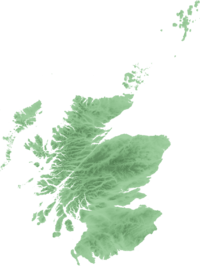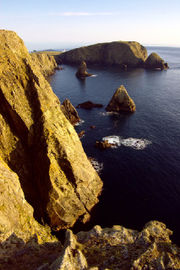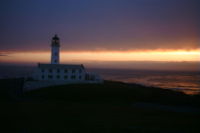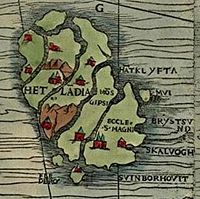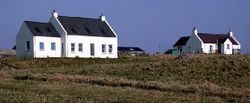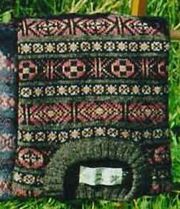Fair Isle
2008/9 Schools Wikipedia Selection. Related subjects: European Geography
| Fair Isle | |
|---|---|
| Location | |
| Fair Isle shown within Scotland. | |
| OS grid reference: | HZ209717 |
| Names | |
| Gaelic name: | |
| Norse name: | Frjóey/Friðarey |
| Meaning of name: | "Sheep island", from Norse |
| Area and Summit | |
| Area: | 768 ha |
| Area rank: | 61 |
| Highest elevation: | Ward Hill 217 m |
| Population | |
| Population (2001): | 69 |
| Population rank: | 50 out of 98 |
| Groupings | |
| Island Group: | Shetland |
| Local Authority: | |
 |
|
| References: | |
| If shown, area and population ranks are for all Scottish islands and all inhabited Scottish islands respectively. | |
Fair Isle (from Old Norse Frjóey) Scottish Gaelic Eileann nan Geansaidh is an island off Scotland, lying around halfway between Shetland and the Orkney Islands. 4.8 kilometres (3 miles) in length and 2.4 kilometres (1.5 miles) wide, it has an area of 768 hectares (3 square miles), making it the tenth largest of the Shetland Islands. The island is situated around 40 kilometres (25 miles) south-west of Sumburgh Head on the Mainland of Shetland. Although it is marginally closer to North Ronaldsay Orkney, Fair Isle is administratively part of Shetland. It gives its name to one of the British Sea Areas. It is the most remote inhabited island in the United Kingdom.
The majority of the seventy islanders live in the crofts on the southern half of the island, with the northern half consisting of rocky moorland. The western coast consists of cliffs of up to 200 metres (660 feet) in height. The population has been decreasing steadily from around four hundred in around 1900. There are no pubs or restaurants on the island, but there is a single primary school. After the age of eleven, children must attend a boarding school in Lerwick.
History
Fair Isle has been occupied since the Bronze Age which is remarkable because of the lack of raw materials on the island, although it is surrounded by rich fishing waters.
On August 20, 1588 the flagship of the Spanish Armada, El Gran Grifón, was shipwrecked in the cove of Stroms Heelor, forcing its 300 sailors to spend six weeks living with the islanders. The wreck was discovered in 1970.
Bird observatory
Fair Isle has had a permanent bird observatory since 1948 because of its importance as a bird migration watchpoint and this provides most of the accommodation on the island. The first Director of the observatory was Kenneth Williamson. It is unusual amongst bird observatories in providing catered, rather than hostel-style, accommodation. Many rare species of bird have been found on the island, and it is probably the best place in western Europe to see skulking Siberian passerines like Pechora Pipit, Lanceolated Warbler and Pallas's Grasshopper Warbler. In 2008 a Caspian Plover was observed, only the fourth such record for the UK.
The island was bought by the National Trust for Scotland in 1954 from George Waterson, the founder of the bird observatory.
Economy
Fair Isle is famous for its knitted jumpers, with knitting forming an important source of income for the women of the islands. The principal activity for the male islanders is crofting.
Since 1982, two thirds of the community's power has been supplied by wind turbines, and just one third by diesel generators. The island has a distinctive double electrical network. Standard electricity service is provided on one network, and electric heating is delivered by a second set of cables. The electric heating is mainly served by excess electricity from the two wind turbines that would otherwise have had to be dumped. Remote frequency-sensitive programmable relays control individual water heaters and storage heaters in the buildings of the community.
Ward Hill (715ft) played host to a hastily built RAF radar station during WWII, the ruins of which are still present today. There are also substantial sections of a crashed Heinkel He 111.
On January 29, 2004, Fair Isle was granted Fairtrade Island status.
Transport
- Fair Isle Airport serves the island with flights to Lerwick
- The Good Shepherd IV plies between Fair Isle and Grutness
- In 2007 Loganair announced the introduction of a twice-weekly service between Kirkwall and Fair Isle, via North Ronaldsay. This service, running between May and October, is to continue in 2008.
